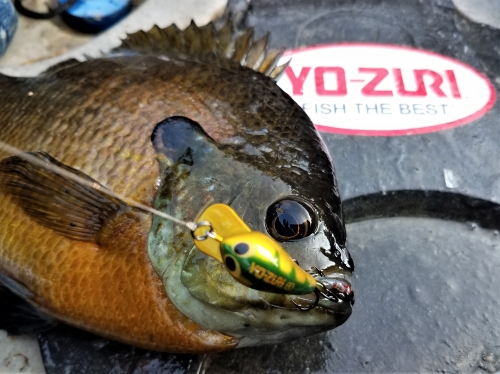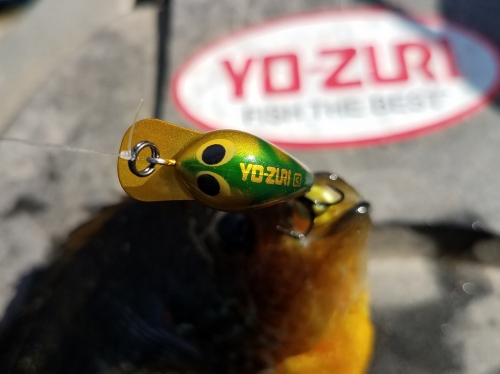BLOG
Snappin’ Skinny Water Panfish- by Mark Maule
As the water warms to 60 Degrees in the spring, we as anglers often times find ourselves faced with the great dilemma of what kind of fish we should chase. During this time of year many fishing seasons are opening and a lot of attention is rightfully given to northern pike, walleyes, muskies, and bass. While these are all terrific species to pursue, don’t forget about panfish. It is in the late spring when big bull bluegills and colossal crappies begin roaming the shallows looking for forage and preparing themselves for their respective spawns.

One of my favorite lures during the pre-spawn for crappies and bluegills is the Yo-Zuri Snap Bean. It is arguably one of the most versatile panfish lures that I use because it can be casted, trolled, or used under a bobber. During the late spring when I am fishing the dark shallow bays on the north end of a lake as bluegills and crappies begin moving in, I will use a very specific cadence (explained in the upcoming paragraphs) in order to ensure that I not only catch fish, but that I also avoid as many snags in the 1-2’ of water that I am fishing.
When using the Snap Bean, I usually recommend 6 lb Yo-Zuri Hybrid line as it is inevitable that if you have panfish in your system, then there will be a time when a bass or northern will munch your bait. Generally speaking, I tip the Snap Bean treble with some kind of plastic grub that is less than an inch long. The next item that I choose for this set up is a clip on bobber which I place 6-12” above the Snap Bean depending on the depth of the water. If it is only 12” deep, then go with 6” for the bobber placement. If the water is 2’ deep, then go with 12” for the bobber placement.

After you are rigged and ready to go, the next piece of the puzzle is probably the most critical to consider when fishing with the Snap Bean. Cast the bobber out and then pause for 3-5 seconds as the Snap Bean sinks slowly. Many times bluegills and crappies will grab the lure while it is in this sinking motion. If no fish bites in the first 3-5 seconds, then begin reeling SLOW. When I say SLOW, I mean slow to the point that you have your rod tip high in the air and you reel the bobber just slow enough so that it stays afloat skimming the top of the water throughout the entire retrieve. If the bobber goes beneath the surface, then you are reeling too fast. This cadence allows you to see your bobber, but because you have a constant slight tension on the line, you are also able to feel bites when reeling it up. When you can feel the bite, you may be more apt to hook up more times than if just waiting for a fish to bite a bait under a relatively stationary bobber.

While there are a multitude of ways to catch bluegills and crappies in spring, it is arguable that the Yo-Zuri Snap Bean is one of the most effective and enjoyable lures for catching large fish. It is a morsel that big bulls and slabs just can’t pass up as it cruises through the shallows on the end of your line. If you want to catch more panfish this spring, stock up on the assortment of Yo-Zuri Snap Bean colors available today.
